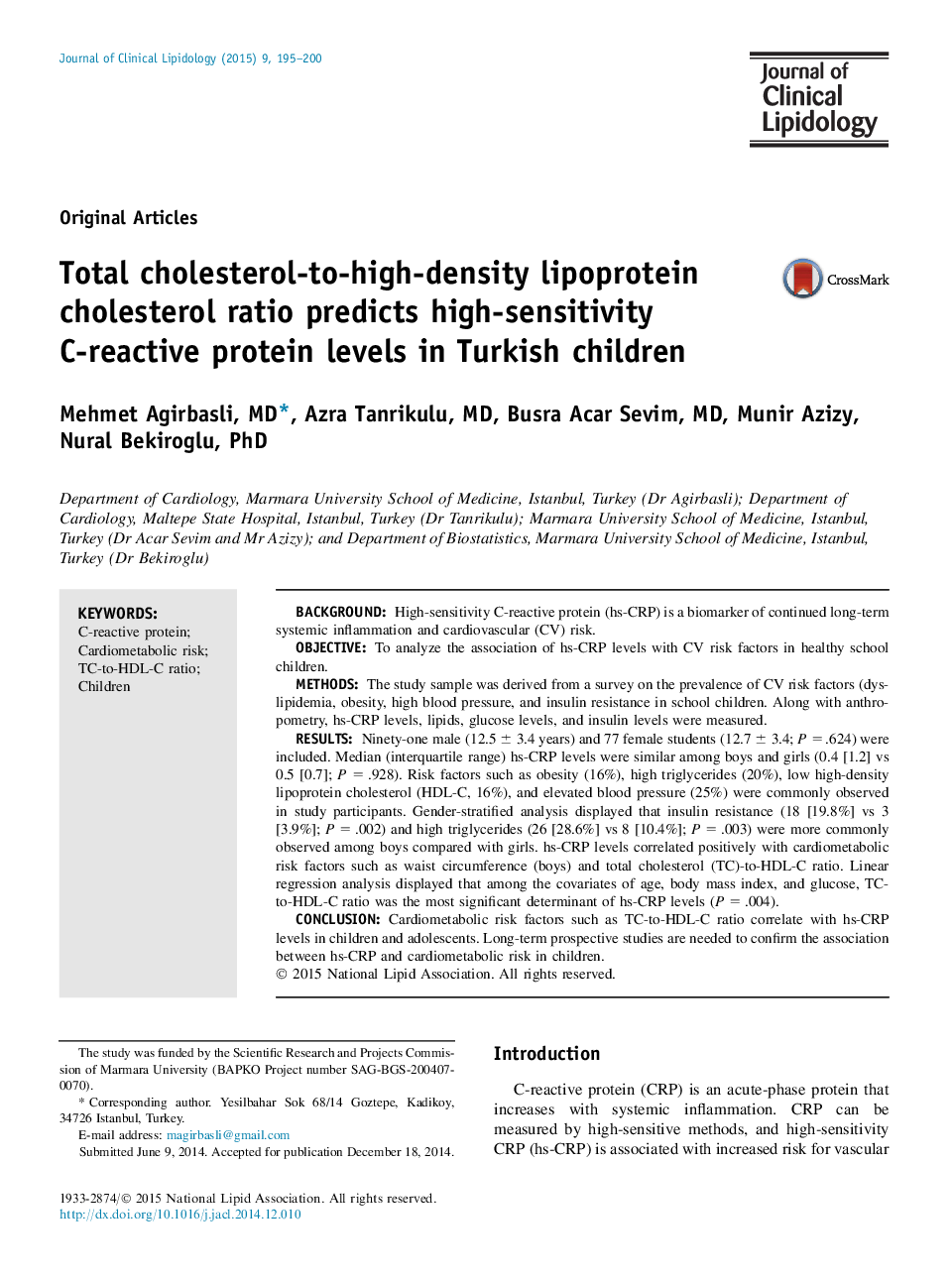| کد مقاله | کد نشریه | سال انتشار | مقاله انگلیسی | نسخه تمام متن |
|---|---|---|---|---|
| 5985870 | 1178784 | 2015 | 6 صفحه PDF | دانلود رایگان |
- High-sensitivity C-reactive protein (hs-CRP) levels correlate significantly with cardiometabolic risk traits in children.
- Total cholesterol-to-high-density lipoprotein cholesterol ratio is the most significant determinant of hs-CRP levels in children and adolescents.
- Dyslipidemia in childhood can trigger inflammation even in the absence of obesity, insulin resistance, or metabolic syndrome.
- Gender differences exist in the association of hs-CRP with cardiometabolic risk in children.
BackgroundHigh-sensitivity C-reactive protein (hs-CRP) is a biomarker of continued long-term systemic inflammation and cardiovascular (CV) risk.ObjectiveTo analyze the association of hs-CRP levels with CV risk factors in healthy school children.MethodsThe study sample was derived from a survey on the prevalence of CV risk factors (dyslipidemia, obesity, high blood pressure, and insulin resistance in school children. Along with anthropometry, hs-CRP levels, lipids, glucose levels, and insulin levels were measured.ResultsNinety-one male (12.5 ± 3.4 years) and 77 female students (12.7 ± 3.4; P = .624) were included. Median (interquartile range) hs-CRP levels were similar among boys and girls (0.4 [1.2] vs 0.5 [0.7]; P = .928). Risk factors such as obesity (16%), high triglycerides (20%), low high-density lipoprotein cholesterol (HDL-C, 16%), and elevated blood pressure (25%) were commonly observed in study participants. Gender-stratified analysis displayed that insulin resistance (18 [19.8%] vs 3 [3.9%]; P = .002) and high triglycerides (26 [28.6%] vs 8 [10.4%]; P = .003) were more commonly observed among boys compared with girls. hs-CRP levels correlated positively with cardiometabolic risk factors such as waist circumference (boys) and total cholesterol (TC)-to-HDL-C ratio. Linear regression analysis displayed that among the covariates of age, body mass index, and glucose, TC-to-HDL-C ratio was the most significant determinant of hs-CRP levels (P = .004).ConclusionCardiometabolic risk factors such as TC-to-HDL-C ratio correlate with hs-CRP levels in children and adolescents. Long-term prospective studies are needed to confirm the association between hs-CRP and cardiometabolic risk in children.
Journal: Journal of Clinical Lipidology - Volume 9, Issue 2, MarchâApril 2015, Pages 195-200
